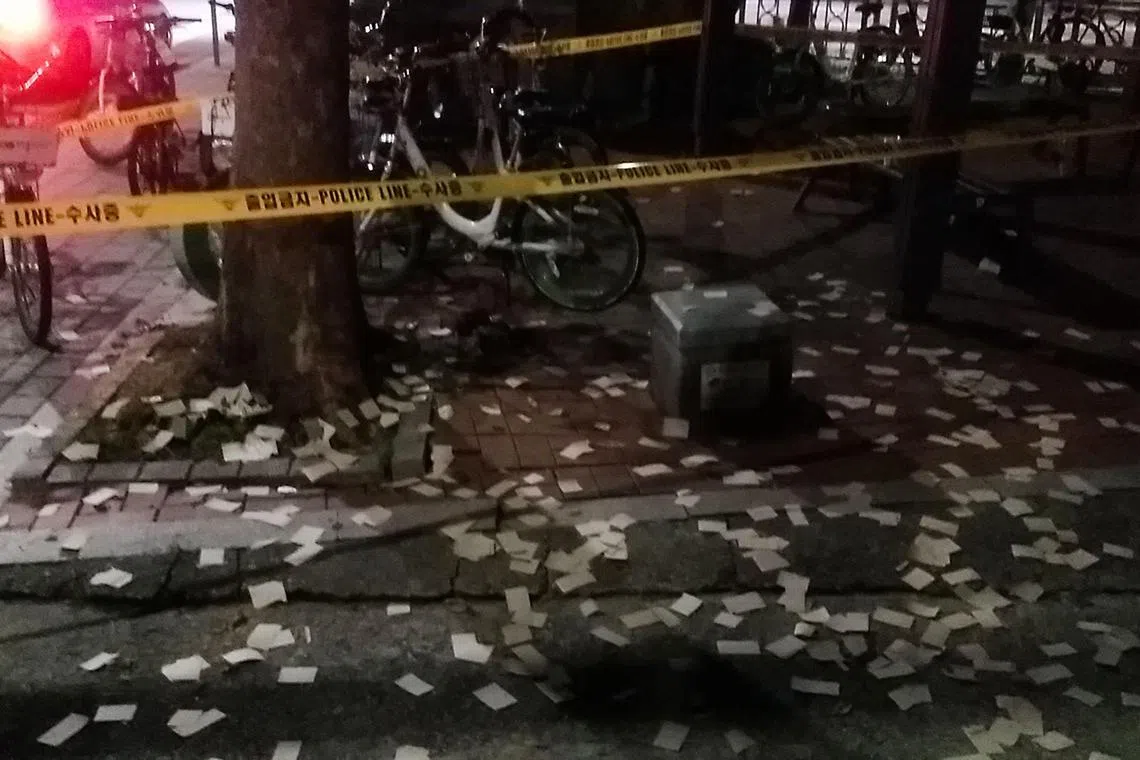Trash-filled balloons from North Korea hit the South’s presidential compound
Sign up now: Get insights on Asia's fast-moving developments

This is the 10th time in 2024 that North Korea has sent the trash-filled balloons across the border.
PHOTO: AFP
Follow topic:
SEOUL - Trash-filled balloons sent by North Korea hit the South Korean presidential compound on July 24, security officials told AFP, prompting Seoul to mobilise chemical response teams in the escalating tit-for-tat propaganda war.
It is the first time the South Korean leader’s office in downtown Seoul, which is protected by scores of soldiers and a no-fly zone, has been directly hit by any of the thousands of trash-filled balloons launched by Pyongyang since May
“The chemical, biological and radiological (warfare) response team has safely collected the trash balloons,” the presidential security service told AFP.
“After investigation, results have confirmed that there was no danger nor contamination,” it said.
South Korea’s Joint Chiefs of Staff had earlier confirmed that the North was once again sending the balloons. Seoul city authorities also issued an alert on the morning of July 24.
“If you find any fallen balloons, do not touch them, and report them to the nearest military unit or police station,” they said.
According to Yonhap news agency, the presidential office had been monitoring the balloons in real time, and was aware of exactly where they would land.
“It is difficult to handle midair because we do not know what the balloons may contain,” said a presidential official, according to Yonhap’s report. “There will be no change in our policy of collecting them after they have fallen.”
The military has refrained from shooting down the balloons out of concern that their contents could spread farther and cause more damage, Yonhap said.
The balloons are a security issue for Seoul, but in this instance, the North just got lucky, an analyst told AFP.
“It is a security problem since there are different defence facilities for the presidential complex,” said Professor Park Won-gon from Ewha Womans University.
“Since the balloons fly with the wind, they fall very randomly. It’s difficult to say North Korea intended to do this,” he added.
This is the 10th time in 2024 the North has sent the balloons across the border, in what it claims is retaliation for anti-regime propaganda balloons launched by South Korean activists.
In response to the waves of balloons, South Korea on July 21 resumed “full scale” propaganda broadcasts from loudspeakers
Seoul has also fully suspended a tension-reducing military deal and restarted live-fire drills on border islands and near the demilitarised zone that divides the Korean peninsula.
The two Koreas remain technically at war because the 1950-53 conflict ended in an armistice, not a peace treaty.
The propaganda broadcasts – a tactic which dates back to the Korean War – infuriate Pyongyang, which previously threatened artillery strikes against Seoul’s loudspeaker units. AFP

